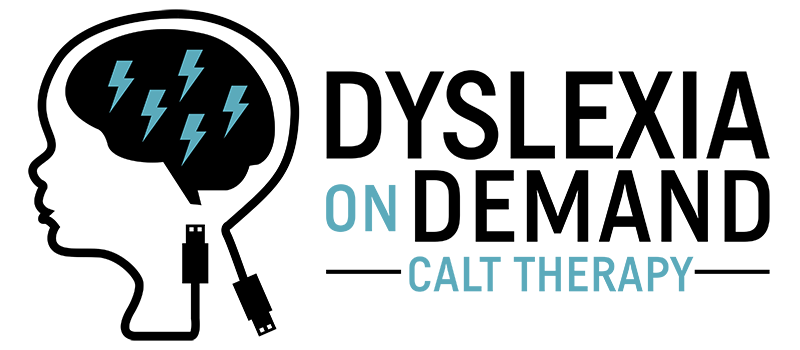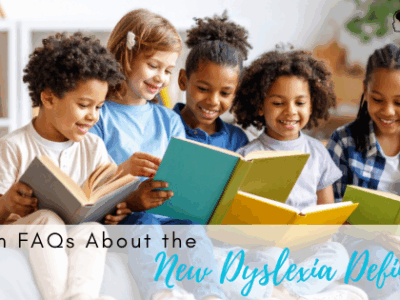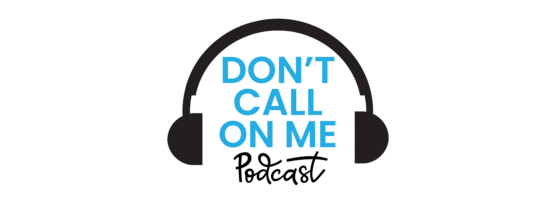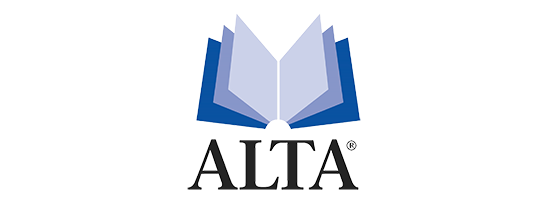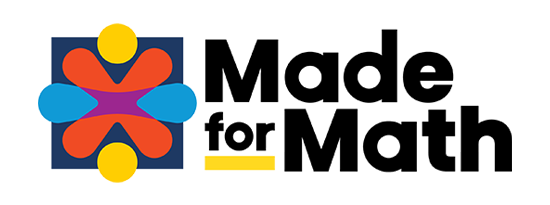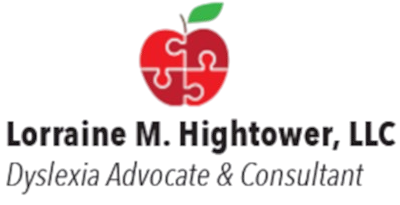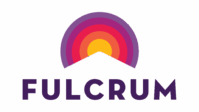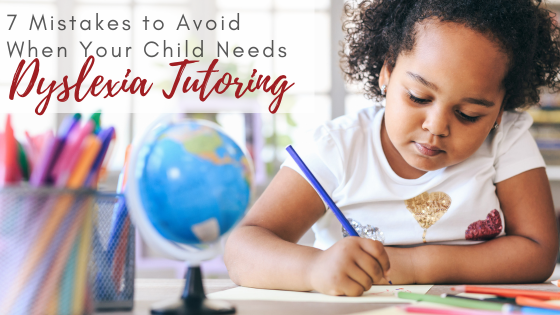
7 Mistakes to Avoid When Your Child Needs Dyslexia Tutoring
One thing is certain about dyslexia: finding the right treatment for your student is so important. If you suspect your child has dyslexia, it is wise to seek an evaluation and options for treatment promptly. By seeking treatment early on, students with dyslexia can have a better chance at improving in their grade-level reading skills. Without any intervention for dyslexia, children who struggle to read in elementary grades are likely to continue to struggle in middle school and beyond. In order to support your student’s learning and to encourage success, it’s essential to find the right kind of help. Every child deserves the opportunity to be academically successful. Read on to learn about 7 mistakes to avoid when your child needs dyslexia tutoring.
- Don’t assume laziness. Lack of effort and laziness are not the causes of dyslexia. Sometimes parents err on the side of implementing repetition and intensity through tutoring. Tutors, drills, and flashcards are not the only avenue to pursue for students with dyslexia. It’s important to note that this specific learning disability is a neurological condition that affects the way that the brain processes language. The right kind of intensive therapies for dyslexia ought to be implemented so that children can learn better and eventually become responsible for their learning success.
- Don’t focus only on reading. Reading is a key area of difficulty for people with dyslexia, but there’s more to it than that. Dyslexia also affects writing and spelling skills as well as other areas of academics. Dyslexia tutoring should focus on both reading and writing. At Dyslexia on Demand, Certified Academic Language Therapists work with students on things like accuracy, fluency, and understanding so that students may have independence in their written language skills. Reading, writing, spelling, study skills, and math can all be affected by dyslexia, and the right therapies can help to alleviate issues across the curriculum.
- Don’t use a one size fits all approach. Every student with dyslexia has different needs when it comes to making progress and learning. Tailoring interventions and strategies to each child’s specific needs helps to ensure success. The experts at Dyslexia on Demand review comprehensive evaluation reports and then administer academic skills assessments in order to obtain baseline documentation for students. Dyslexia on Demand exclusively offers one-on-one or group therapy opportunities with Certified Academic Language Therapists four times per week; programs are geared to each student’s individual needs.
- Ensure that you insist upon qualifications and experience. It is essential that the professionals you choose have the necessary qualifications and experience to teach students with dyslexia. Seek out tutors who have specialized training in dyslexia. Dyslexia on Demand’s dyslexia therapy program uses Certified Academic Language Therapists (CALTs). CALTs are the highest level of dyslexia trained experts. They’re qualified to implement therapeutic grade intervention programs and to provide diagnostic, explicit, systematic methods of instruction.
- Thoroughly examine teaching programs. Tutors for dyslexia should use evidence-based teaching methods that have proven to be effective in helping students with dyslexia. There are many off-the-shelf reading programs that work to help students with reading, but not all methods work for students with dyslexia. Dyslexia on Demand uses two different therapy programs—Take Flight dyslexia therapy and Basic Language Skills Therapy (BLS), as well as early intervention programs for younger children. Take Flight is a 2-year curriculum for a comprehensive intervention program. It’s designed for use by Certified Academic Language Therapists for children with dyslexia who are 7 and older. Take Flight was created to help students with dyslexia gain and maintain better word recognition, fluency, and comprehension; it also aims to help in the transition from the therapy setting to the real world. BLS is intensive literacy instruction in phonemic awareness, letter recognition, decoding, spelling, fluency, comprehension, handwriting, vocabulary, and oral-written expression; it’s a research-based curriculum that shares similar characteristics and philosophies as other Orton-Gillingham-based programs.
- Prioritize a personal connection. It is important that you choose a tutor with whom your child feels comfortable and connected. Building a positive rapport with a tutor is key, as it creates a positive learning environment and can help increase a student’s motivation. Through Dyslexia on Demand, students will work closely with one CALT, unless unforeseen circumstances arise.
- Consider convenience and consistency when deciding on a tutor. Consistency is also important when working with a tutor for dyslexia. Not only is it good to have a connection with a personal tutor, it is also wise to stay consistent with the frequency and duration of tutoring sessions. Driving far away to sessions can also be inconvenient; using an online program with experienced professionals can be a great, more achievable alternative. It is the mission of Dyslexia on Demand to make help accessible to students with dyslexia, despite any shortage of interventionists or geographical limitations. Online dyslexia programs like the ones offered at Dyslexia on Demand have the potential to change the lives of children who struggle with reading.
With the right kind of treatment for dyslexia, students have the power to develop not only better skills and more interest in academics, but stronger confidence in themselves. Through Dyslexia on Demand, students and parents are given strategies to help each student become academically successful. Reach out to Dyslexia on Demand to find out more or to book a free consultation.
